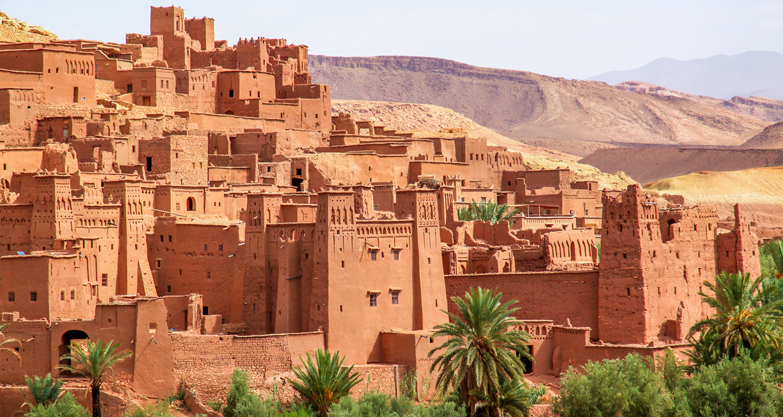
Image from Academy Travel
From Hitchcock spy thrillers to war themed movies and even a James bond instalment, it seems like Morocco is tailor-made for Hollywood films looking for an exotic backdrop. The country has it all – dry Saharan deserts, the high Atlas Mountains, spice markets in ancient medinas and everything else in between. With a list of films featuring some of Morocco’s idyllic landscapes and the rise of social media, it’s no wonder that the tourism industry has seen a jump in recent years.
Before Morocco becomes too over commercialised and while it still retains its old world charms, we’ll share some recommendations of places to visit for your next trip to the gateway to Africa.
Fes
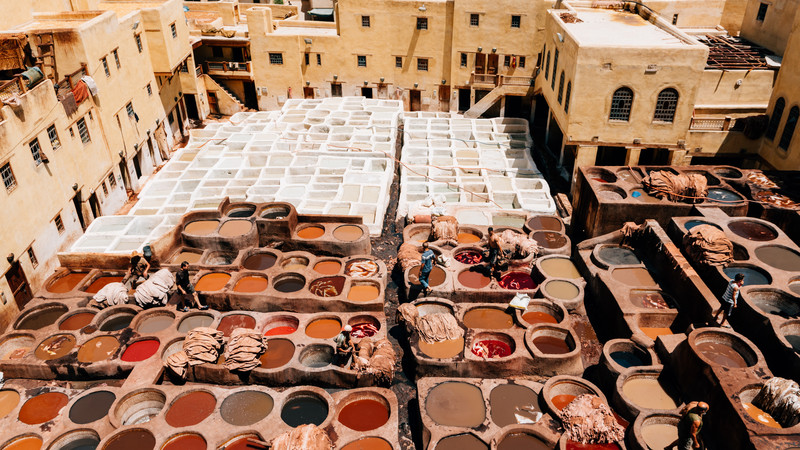
Image of the Chouara Tannery from Intrepid Travel
Fes is the second largest city in Morocco and arguably one of the most famous cities people would recommend to visit in Morocco after Marrakesh and Chefchouen. Founded in the 8th century, this city expanded quickly due to the presence of madrasas (religious schools) and the heavy role of merchants bringing business and regional migrants into the city.
Fes el Bali
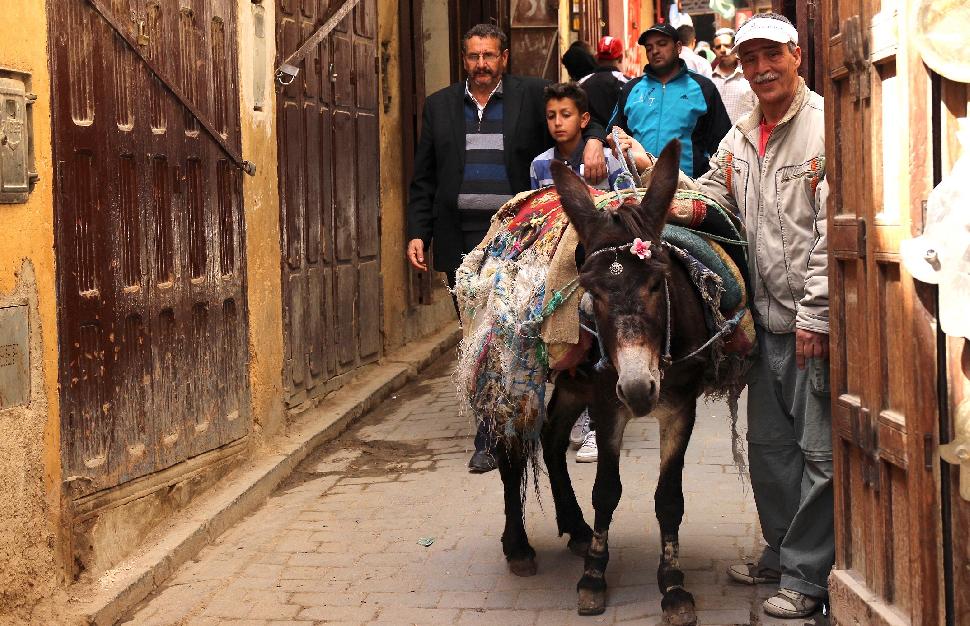 Image of Fes el Bali from Pippa Whishaw
Image of Fes el Bali from Pippa Whishaw
The most important place to visit in Fes is the medieval medina (old town), known as the Fes el Bali. The labyrinth of streets and narrow alleyways are recognised as a World Heritage Site in 1981 and features one of the world’s largest urban pedestrian zones. Walk through the streets and take in the everyday life of residents living in the medina. Most of what you see has not changed since the medina was built in the 13th century. You’ll even see goods being delivered on donkeys and mules just like how it was done in the past.
Visit a Madrasa
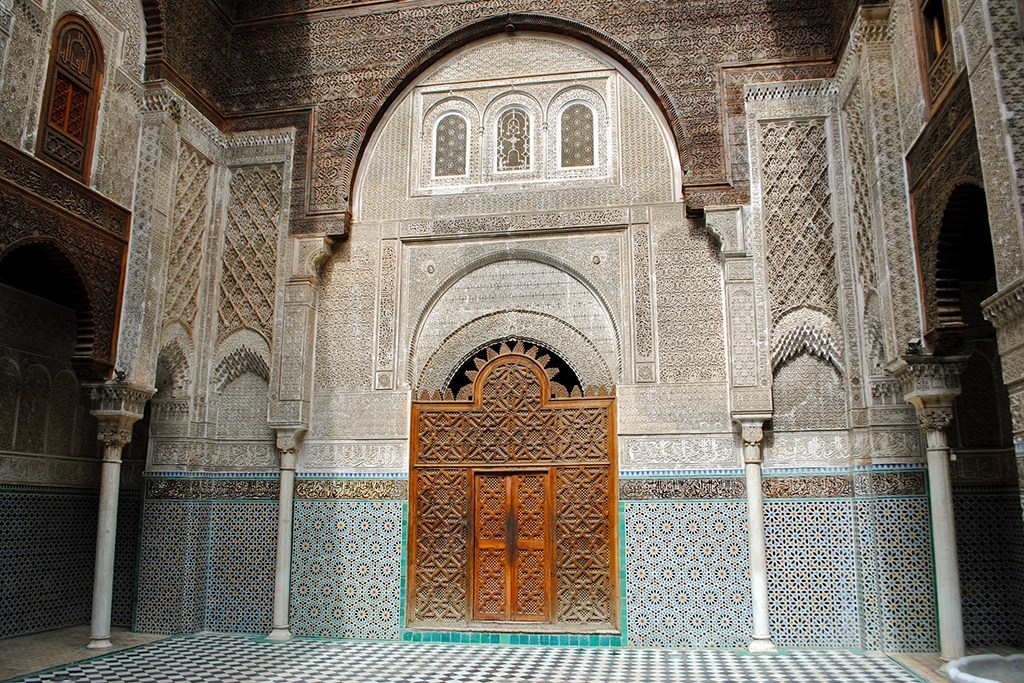 Image of Madrasa al-attarine from @just_a_cheeseburger
Image of Madrasa al-attarine from @just_a_cheeseburger
Places of worship are aplenty in the old town, and they are wonderful places to visit. But another interesting place to visit is one of the Madrasas located in the old town. There are 2 madrasas; Islamic colleges, that you can visit – Madrasa al-Attarine and Bou Inania Madrasa. Take a short walk within these colleges to get a glimpse of impressive architectural structures, intricate carvings and tiles that adorn their walls. It is a sight to behold.
Bab Boujeloud
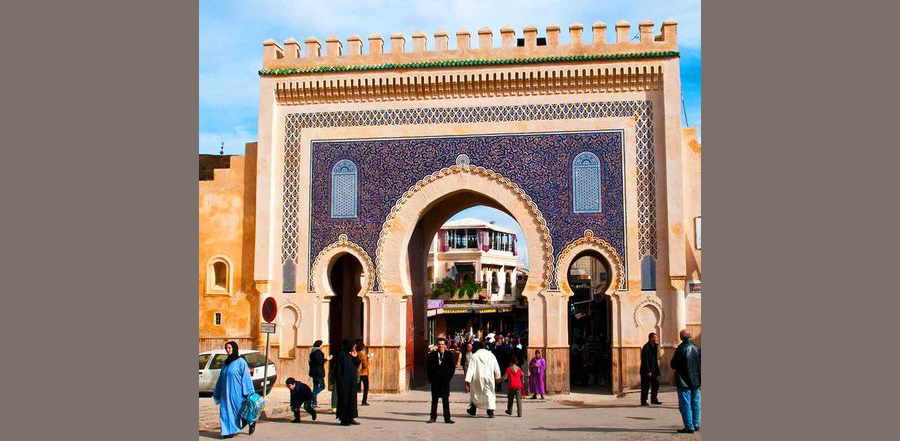
Image of Bab Boujeloud from Zona Viajero
Probably one of the most popular gates in the old city, Bab Boujeloud translates into Blue Gates. Built in 1913, its archways are stunning architectural works. The green tiles on one side face the Medina because green is the colour is Islam, while the other side has blue tiles which is the colour of Fes.
Stay in a Riad
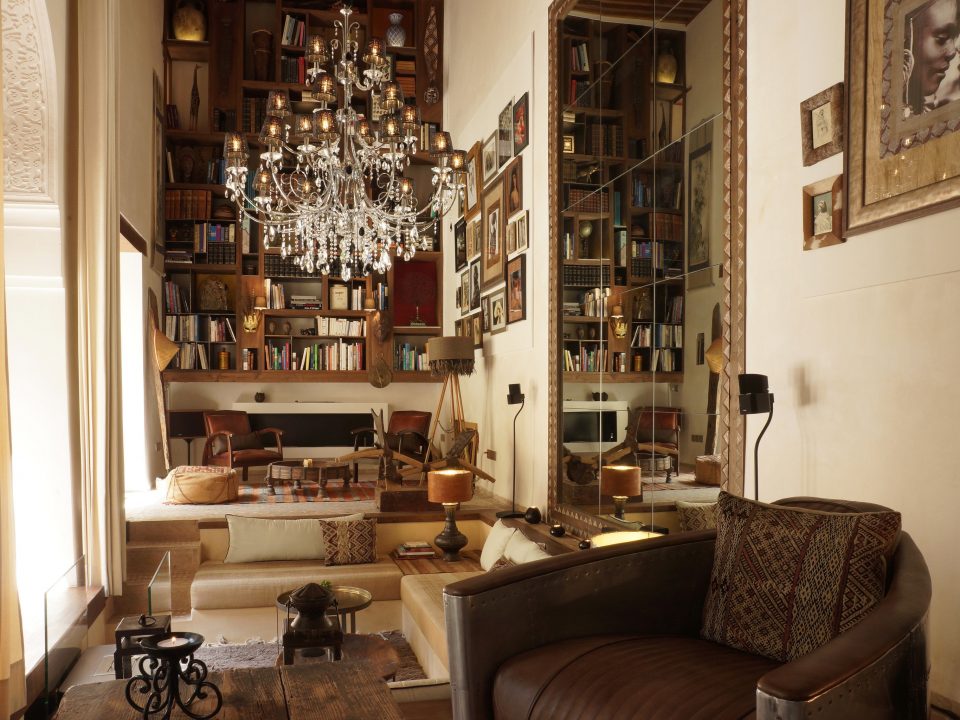 Image of Karawan Riad from Jetsetter
Image of Karawan Riad from Jetsetter
Your trip to Morocco is incomplete without staying in a traditional Moroccan riad. Riads are guesthouses with an interior courtyard. The courtyards are typically built in the middle of the property and is open from the top to let in some natural light and to ventilate the space. There are a number of traditional riads in Fes that you can stay in. We chanced upon Karawan Riad when looking up riads online and reviews have said that this riad exudes luxury and elegance. The stay also includes meals prepared with fresh local produce found in the markets daily.
Chouara Tannery
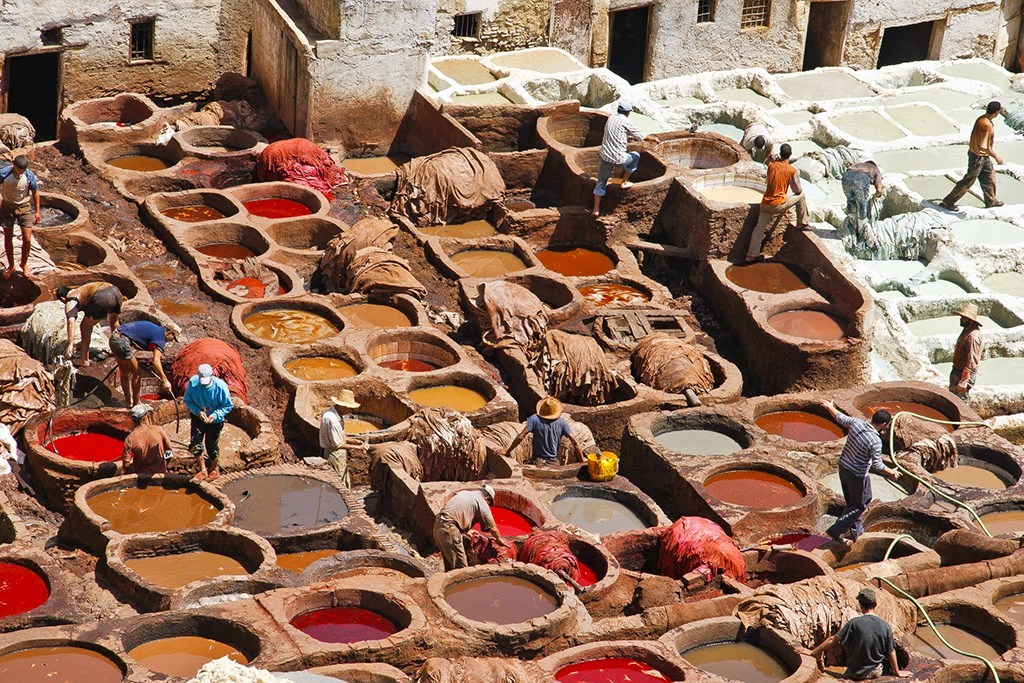 Image of Chouara Tannery from Mike Prince on Flicker
Image of Chouara Tannery from Mike Prince on Flicker
One of the most interesting places to visit in Fes is the Chouara Tannery. As the oldest tannery in the world, they continue to adopt the old process of dyeing leather with dyes and liquids like pigeon droppings and cow urine. Despite the strong smells that are emitted, be treated to a visual spectacle of rows of stone basins filled with different coloured dyes and enjoy the leather tanning process in action!
Other Places Of Interest
There are many other places you can visit during your stay in Fes such as the Jnan Sbil Garden where you will find a well-trimmed garden with lush greenery and rows of neatly groomed flower bushes. Alternatively, you could also take a hike up the Marinid Tombs and be treated to a panoramic view of the city of Fes.
Chefchouen
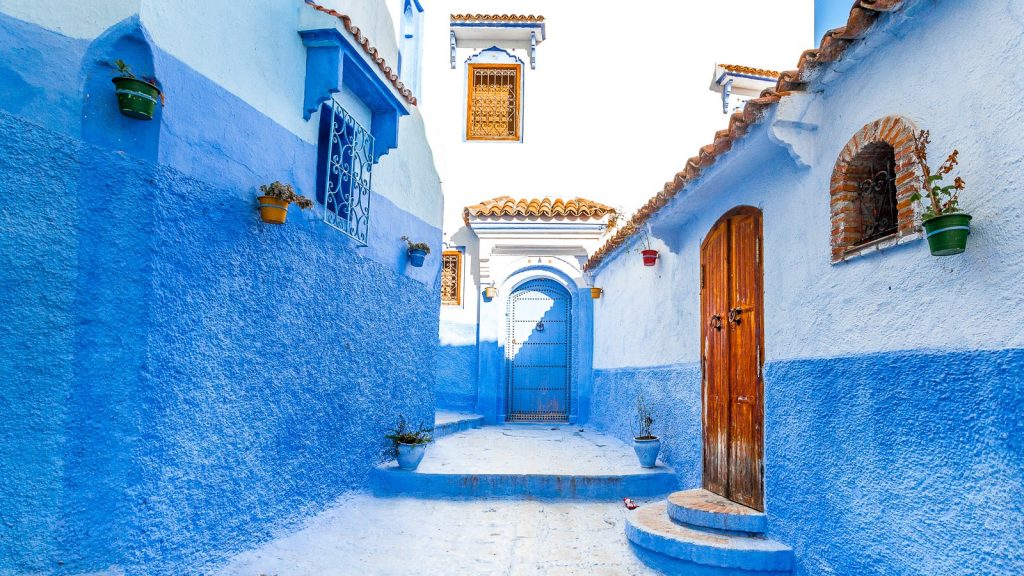
Image of Chefchouen from Mowgli Adventures
You will recognise Chefchouen by its iconic blue buildings. The entire city is painted a bright blue hue! There are several suggestions as to when this practice began, one of which suggests that the Jewish migrants who eventually settled in Chefchouen decided to paint it blue. In any case, what remains is a city of blue buildings with winding streets and lots of picturesque locations.
Plaza Uta el-Hammam
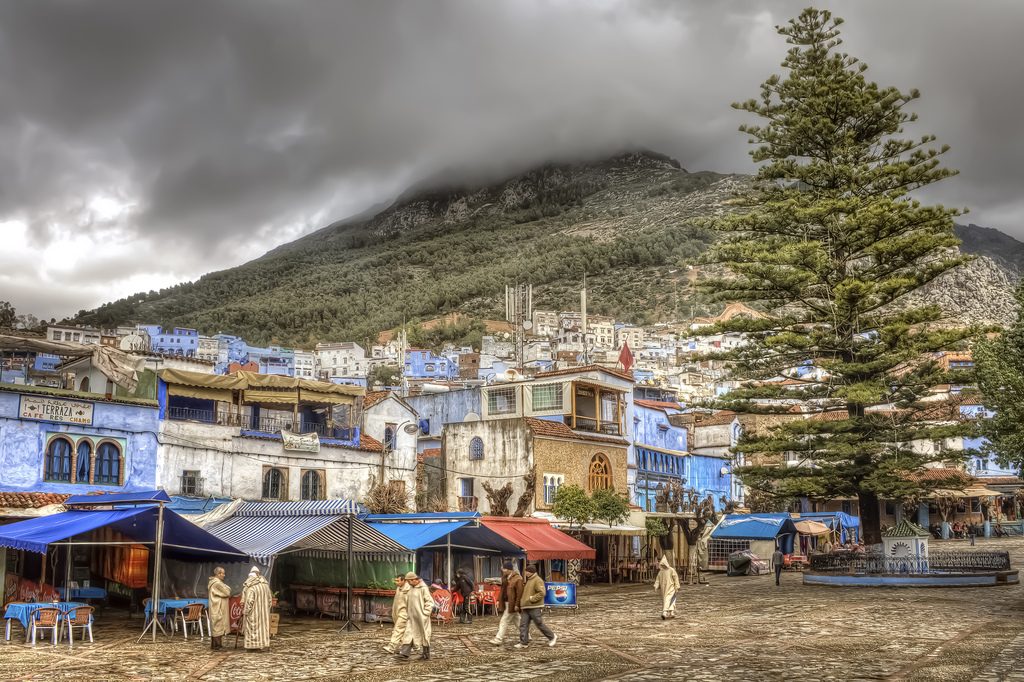
Image of Plaza Uta el-Hammam from ttnotes.com
Boasting of a fusion of Arabic and Spanish influences, this town square is surrounded by shops and restaurants with a view of the Rif mountains. Take a seat in one of the cafes lining to square and enjoy the mountain-scape in the background.
Spanish Mosque

Image of the Spanish Mosque by Conversant Traveller
Built in the 1920s by the Spanish, but never used, this one-of-a-kind beauty sits atop a hill overlooking the city. Because it was never used, it fell into disrepair and was only renovated a number of years ago. Take a short 30-minute hike up the gentle slope on the hill to the mosque in the late afternoon and bask in the golden hour as you watch the sunset over the horizon.
Volubilis

Image of Volubilis by Travel Bliss Now
One of the best preserved Roman ruins located between Morocco’s Imperial cities – Fez and Meknes. This partially excavated city was founded by the Berber people in the third century and once served as the capital to the kingdom of Mauretania. Make a trip down to this UNESCO World Heritage site to get a history lesson on this Roman city where people once lived a life of extravagance.
Meknes
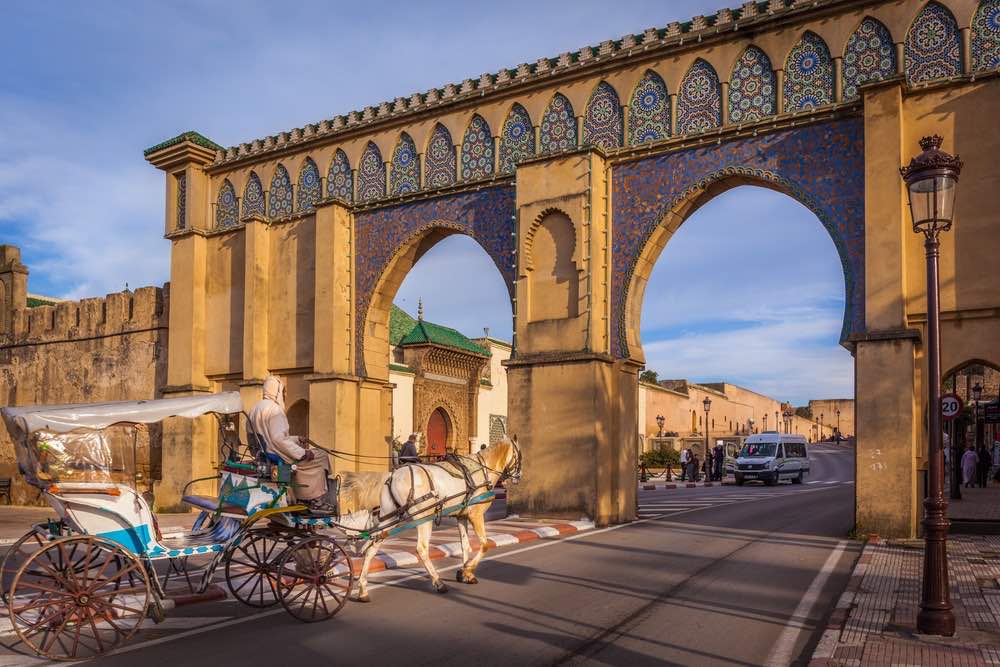
Image of Meknes from Viva Morocco
As one of Morocco’s Imperial cities, Meknes embodies a strong sense of history and culture. Built by Moulay Ismail in the seventeenth century, this city is a breath of fresh air compared to its busier neighbours – Fez and Marrakesh.
Mausoleum of Moulay Ismail

Image of the Mausoleum of Moulay Ismail from Planet Ware
The highlight of Meknes is the Moulay Ismail’s tomb. The Sultan waged countless military campaigns to bring Morocco under his reign. He eventually succeeded in moving the capital from Marrakesh to Meknes in 1672 signalling the start to a period of cultural prosperity and wealth. Newly refurbished, this extravagant tomb is not to be missed.
Bab el Mansour
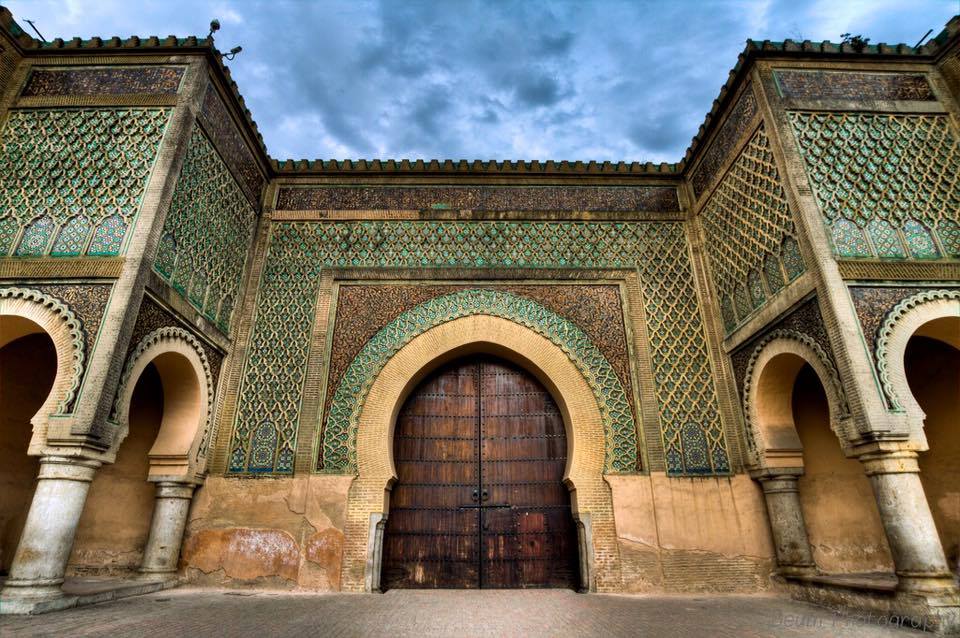
Image of the Bab el Mansour from Steemit
This grand imperial gateway was the brainchild of Sultan Moulay to flaunt his new capital to neighbouring cities. However, the gateway was only completed after his death. Made with Roman rocks plundered from the old capital, and Corinthian marble once shored up in a Marrakeshi palace, this architectural beauty holds much historical and cultural significance.
Other Places Of Interest
You can always wander through the bustling streets and do some light shopping in the local markets within the medina, or take a mint tea break and watch the sunset in the Place Hedim. For something a little different, grab a drink at one of many bars available in the medina or visit a winery surrounding the countryside. Interestingly, Meknes is located within Morocco’s main wine producing regions, and does produce some decent vintages.
Sahara Desert
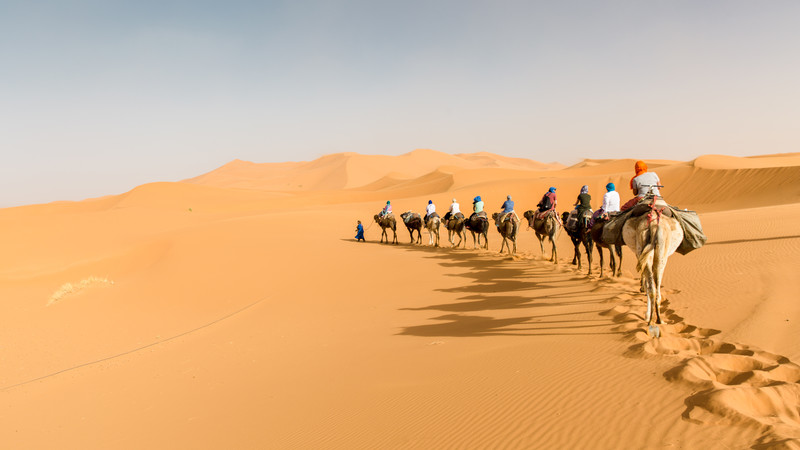
Image of Sahara from Intrepid Travel
It is the world’s largest, hottest desert, but also one of the most majestic places to visit. There are few places on earth that would mesmerise and enthral you from beginning to end. From its bright orange sand; so fine it feels soft to the touch, to the endless dunes in sight, this experience is probably on the top of our bucket list.
Erg Chebbi is one of the most popular sand dune sites amongst tourists, and more easily accessible compared to Erg Chigaga. Your visit will usually start with a long drive into the desert on a hefty Land Rover/cruiser. From there, you will take a shorter camel ride along the dunes to catch the sunset and make camp in one of several campsites in the desert. Imagine experiencing complete silence in the middle of the night, as you admire the milky way above you, and the serene desert landscape all around. This is a once-in-a-lifetime experience that will be etched in your mind forever.
Marrakesh

Image of Marrakesh from Christophe Faugere – Getty Images
End your trip in Marrakesh – the fourth largest city in Morocco and one of the most popular cities to visit. Prepare for your senses to go into overdrive as you experience the sights, sounds and smells that this ancient medina has to offer.
Marjorelle Garden
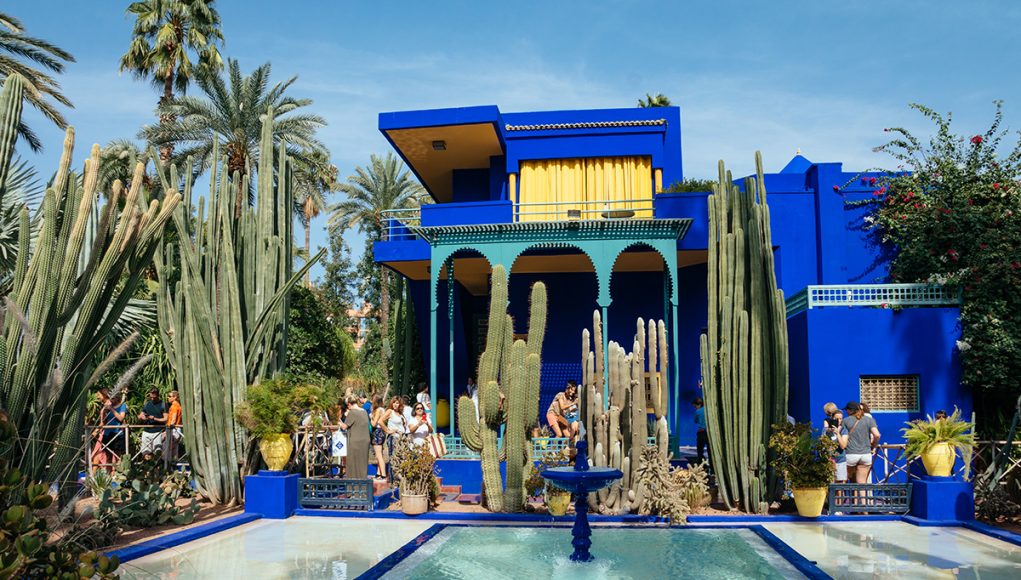
Image of Majorelle Gardens from Annees de Pelerinage
This enchanting garden was created by famous French painter Jacques Majorelle in the 1920s and eventually bought over and restored by Yves Saint Laurent. It took 40 years for the garden to achieve its lush greenery accompanied with marble pools, raised pathways, bamboo groves and huge collection of cacti. A significant feature of this garden is also the fixtures painted in a bright shade of Majorelle blue. Due to the huge popularity of this site, try to come early in the morning or just before it closes to not bustle with such a large crowd.
Yves Saint Laurent Museum
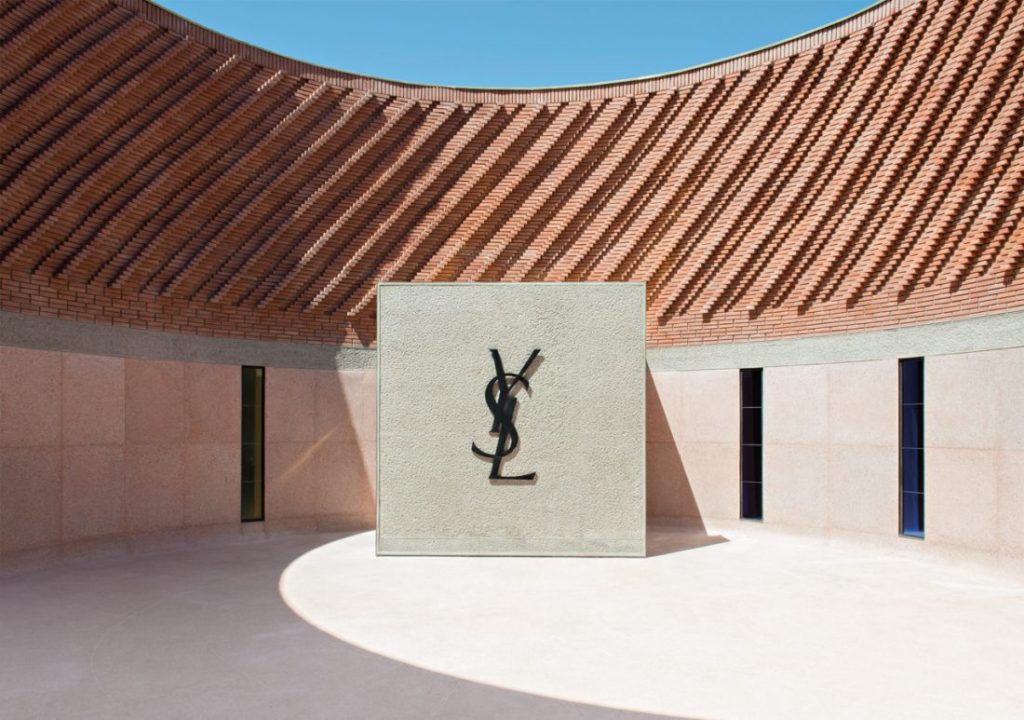
Image of the Yves Saint Laurent Museum from Nicolas Matheus
This small yet enchanting museum is located right next to the Majorelle Gardens and is dedicated to the museum’s namesake. Though the museum is not very large, you will still be able to view a selection of haute couture dresses that Yves Saint Laurent designed. Take time to admire and appreciate the architectural structure of the museum, made to mimic fabric materials.
The Mellah
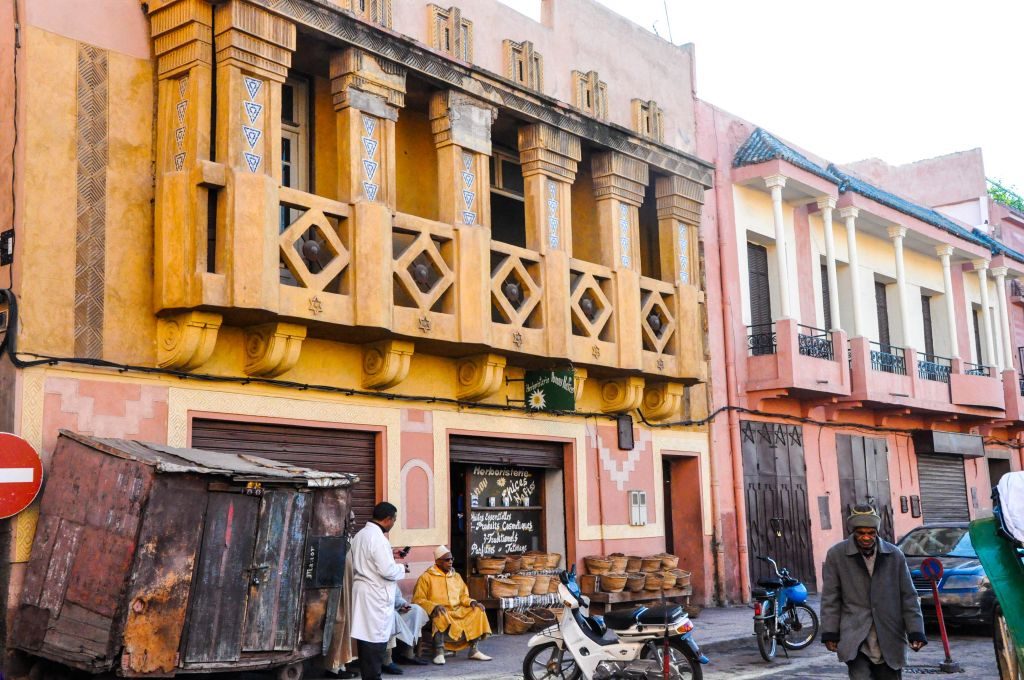
Image of a small synagogue in the Mellah from the Michal Shmulovich
Mellah refers to the Moroccan name for a Jewish ghetto. There was a time in Morocco’s history where the Jewish settlers and Muslim inhabitants strived to live in harmony with each other. The Jews were given their own quarters, where they could conduct business and still remain under the rule of the government. Though most of the Jewish community has since moved out of the Mellah, this little quarter is a unique area to explore and get lost in.
Other Places Of Interest
Marrakesh is a cultural centre with many interesting historical and cultural sites to visit. You can make a trip to see the Koutoubia Mosque, the largest mosque in Morocco. Unfortunately, the mosque is only open to Muslims, other guests may view the gardens on the outer parts of the grounds. For a taste of Moroccan architectural style, head down to Bahia Palace. This palace extends for over 2 acres and features typical Moroccan design influences and offers a glimpse into the extravagant lifestyle of the grand vizier Si Moussa. The Saadian tombs also showcase the immense wealth that was flaunted by the rich Saadian rulers of the 15th century. These opulent tombs made of Italian marble and gold are located on huge plots of land dedicated as burial grounds for 3 Saadian kings who ruled during 1549 to 1659 and for the people who were close to them during their rule.
We conclude with a few parting comments – to travel to Morocco is to be able to travel back in time, to witness the beauty of culture, art and history intertwining to create a plethora of unique experiences for all to enjoy. Morocco features a visual spectacle of traditional riads, extravagant palaces and mesmerising madrasas against a backdrop of ancient medinas, the Saharan desert and African landscapes that will awe and inspire travellers.